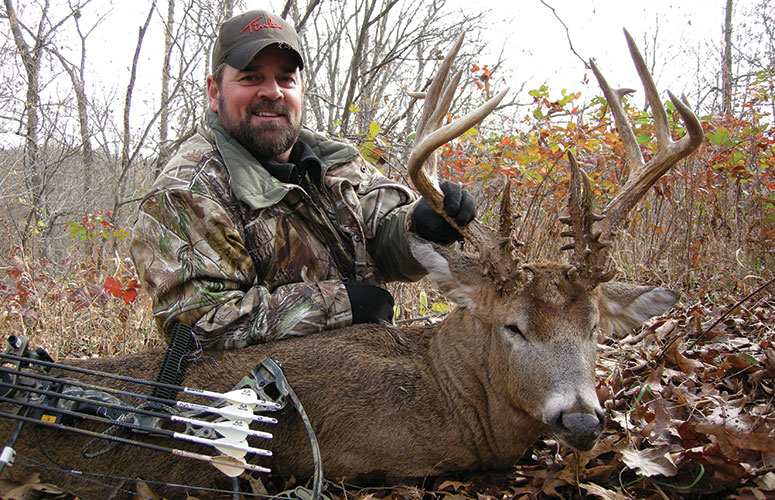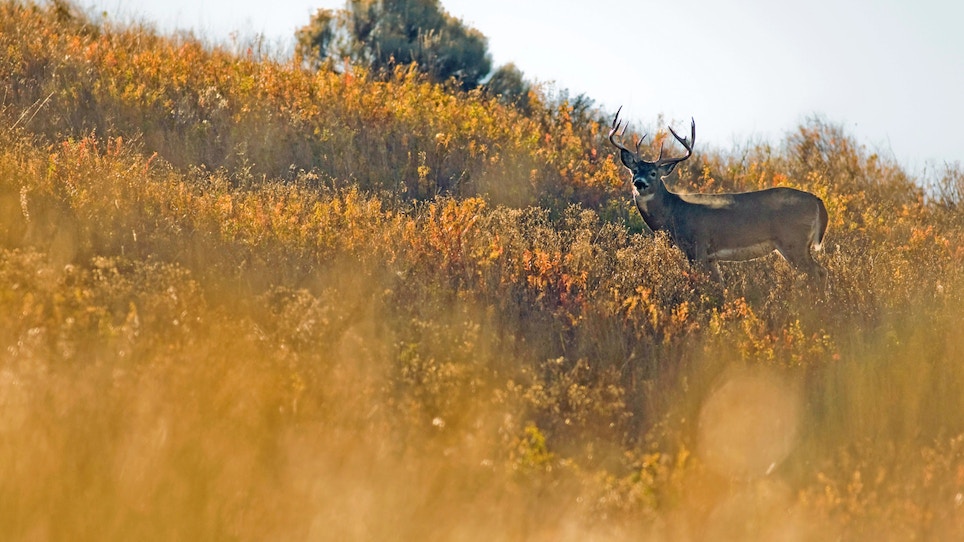Bring up deer scents in a room of serious whitetailers and get ready for a debate that will rival the back-and-forth presidential campaign bantering we’ve all recently been exposed to.
Why?
Opinions about deer scents are like you-know-whats, and everybody has one. Some love them, some hate them and some teeter on the fence. Yes, the use and effectiveness of deer scents is a controversial topic — always has been and likely always will be.
For the early part of my whitetail career, I fell into the “scents are snake oil” crowd. I had zero reason for believing this. I was persuaded by a man at a seminar who blared about how doe estrous scents had foiled his last two rut hunts. He was passionate. He seemed knowledgeable. My mind was made up without ever hanging a wick, pulling a drag or filling a dripper with scrape juice. Stupid!
A few years later I met Terry Rohm from Tink’s. I knew Rohm worked in the world of deer scents, but what I didn’t know is that deer scents are his passion. He is a walking encyclopedia of deer scent information and has spent a lifetime putting Tink’s scents to the test. Needless to say, Terry quickly converted me to the “of course I use scents” crowd, and I’ve been the beneficiary.
Q&A with Tink's Terry Rohm

Terry Rohm of Tink's offers tips to get the most out of deer scents.
My goal now is to let Terry do the same for you. I want those deer scent haters and those on the fence to start taking advantage of quality deer scents. Now for the good news: I’m getting out of the way and letting Rohm take over.
Whitetail Journal: What is the purpose of a scent drag, and when should bowhunters put them to use?
Terry Rohm: There has always been a lot of campfire talk about how a deer knows which way to follow a drag when that particular deer picks up a trail. Think of it this way: How does a beagle on the heels of a rabbit know which way to follow the rabbit? The strongest scent is on the rabbit, so each step that rabbit takes leaves the strongest, freshest scent, meaning his first steps in the woods that particular day will be the weakest. So the weakest scent will be where you start your drag, and the scent will get stronger as you move toward your stand.
I like to use drags when hunting narrow woods, roads or gas/power lines. I soak the rag with a lure and drag the rag down the middle of the opening. If deer are getting across an opening quickly, this will help stop them when they hit the drag trail. Keep in mind rubber boots are a must, and you need to try not to touch anything with your hands.
I also like to run a drag when walking through good deer woods or fields on the way to my stand during the rut. A drag soaked in a rut lure like Tink’s 69 can stop a cruising buck and put him on a direct line to your stand. Be sure when you reach your stand to hang the drag right where you want the buck to stop for a shot. I like to walk past my stand so the buck will give me a good broadside or quartering-away opportunity, and this will prevent him from stopping short of the stand or coming straight to the bottom of the tree.
WJ: When should bowhunters start creating mock scrapes? What is your method for this?
TR: Trail cameras used over mock scrapes have become the hottest craze in the scent world. We have hunters starting mock scrapes in mid-July and August. They want to get a good read on the bucks in the area to identify shooters, young bucks and culls.
When I set early scrapes, I keep them in cool areas. This helps to keep the sun from drying out the scent too fast, and moist ground holds the scent longer. Plus, bucks just seem to prefer scrapes in moist soil.
Your scrape location is everything! Look for old logging roads, creek crossings, a corner of a field or even existing “real scrape” locations from last season. The next step is to look for the right tree — a tree with an overhanging branch. A lot of people overlook the branch, but the branch is as important as the scrape when it comes to scent communication. The overhanging branch should be around 5 feet high. It’s important to remember that the buck has to be able to reach the branch! Take your time finding the right twig. It’s my belief that finding the right branch is a much harder component of the process than making the actual scrape.
Next, take a stick and scrape out the ground underneath the branch. Be sure to scrape all of the leaves and vegetation back in one direction just like a live buck would do. The scrape will become what biologists call “a sign post marking,” meaning along with the scent, deer will identify the scrape visually. Now spray your scrape with Power Scrape — a synthetic formula (check your state regulations when using synthetics) that will reactivate with a little moisture. I even like to pour a little right in the middle of the scrape just like a dominate buck would do.
After this is accomplished, fill your dripper and hang it directly over the scrape. The big thing here is to leave no human scent behind. You might be able to get away with a little early in the season, but start making a few mocks scrapes closer to the rut and the odds of your scrape getting hot go down if you leave your stink behind. Before I leave I like to take our Power Scrape spray and mist the entire overhanging branch and position my trail camera. Just be sure not to check the camera too often.
WJ: How should scents be used when hunting with a buck decoy?
TR: Be sure to spray down the entire decoy in the field with a scent-eliminating spray. This is crucial. The next step is to place the lure between the back legs on something like a cotton ball. The biggest thing is to always use buck urine when using a buck decoy.
WJ: How do you use scents to stop rutting bucks for a shot?
TR: Over the years I’ve found the stronger the smell of a deer lure, the quicker that smell gets the attention of a passing buck. I really like our Tink’s 69 for this. It stops deer when they smell it. You don’t want a deer eyeballing the tree you’re in, so I like using scents to stop deer. It used to be taboo to disperse lure from you stand, but I’ve been very successful misting Tink’s Hot Shots from my stand. The fine mist fills the air with thousands of scent molecules, and when a deer hits the stream, they stop. Misting Hot Shots from your stand can also be used to help cover your scent when deer are coming or moving downwind of you. I have used this method several times to keep deer from blowing out on me. Like any method, it’s not always foolproof, but it will often confuse a deer just enough that they may walk on through your scent stream.
WJ: What is something about deer scents you feel people don’t understand and need to?
TR: When using deer lures you must remember that these lures aren’t magic. Think of a deer like a human. When we wake up in the morning some of us rise happy, some angry and some are sad. Different things depending on the day make us tick. Deer are no different. One day a scent may be exactly what trips his trigger and the next it may be something he ignores entirely.
You also need to put out enough scent for it to be effective. A drop or two of lure is not enough. If you’re going to use scents, use them. Sure, I’ve had deer spook from my scents just like they would from a decoy or inhaling a whiff of human odor, but most of the time when they key on it, they walk right in and put their nose on my scent bomb. The last thing to keep in mind is that deer have to be able to smell your lure. A lure that is placed upwind of traveling deer will do nothing. A buck can be 2 feet from it on the upwind side and walk right past it.
There you go, five tips from a been-there-done-that scent guru. Heed Terry Rohm’s advice and get that trophy buck bowhunting-close this season.






